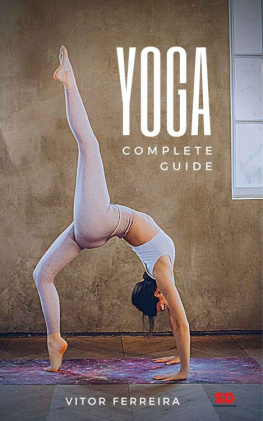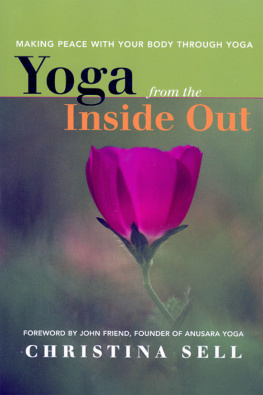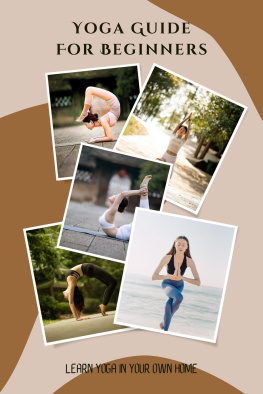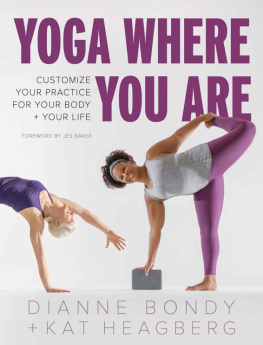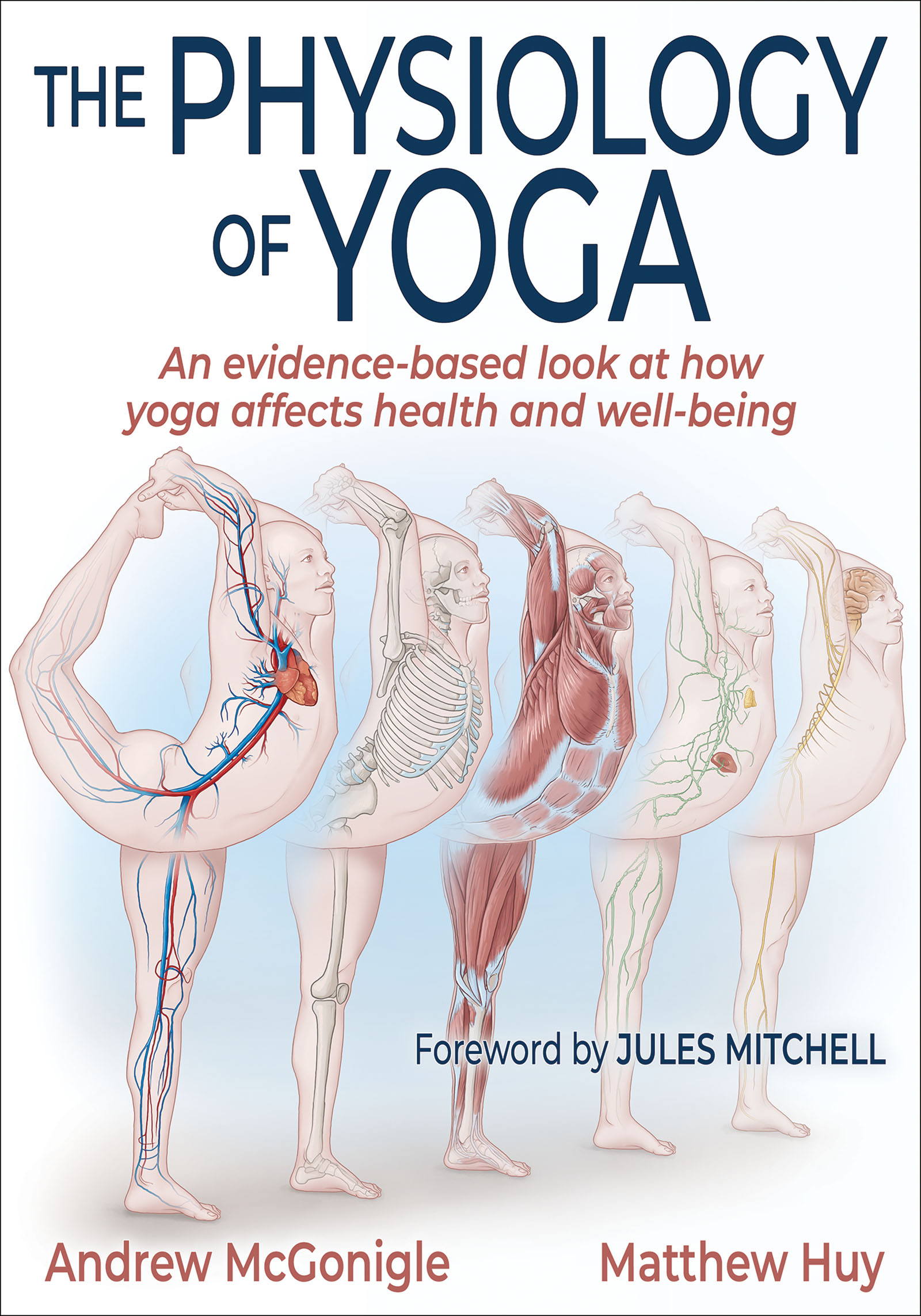Contents
List of Figures
Guide
Pagebreaks of the print version
The Physiology ofYOGA
Andrew McGonigle, MD
Matthew Huy, MSc

Library of Congress Cataloging-in-Publication Data
Names: McGonigle, Andrew, author. | Huy, Matthew P., 1979- author.
Title: The physiology of yoga / Andrew McGonigle, MD, Matthew Huy.
Description: Champaign, IL : Human Kinetics, [2023] | Includes bibliographical references and index.
Identifiers: LCCN 2021062991 (print) | LCCN 2021062992 (ebook) | ISBN 9781492599838 (paperback) | ISBN 9781492599845 (epub) | ISBN 9781492599869 (pdf)
Subjects: LCSH: Yoga--Physiological aspects. | BISAC: HEALTH & FITNESS / Yoga | BODY, MIND & SPIRIT / Mindfulness & Meditation
Classification: LCC RC1220.Y64 M34 2023 (print) | LCC RC1220.Y64 (ebook) | DDC 613.7/046--dc23/eng/20220307
LC record available at https://lccn.loc.gov/2021062991
LC ebook record available at https://lccn.loc.gov/2021062992
ISBN: 978-1-4925-9983-8 (print)
Copyright 2023 by Andrew McGonigle and Matthew Huy
Human Kinetics supports copyright. Copyright fuels scientific and artistic endeavor, encourages authors to create new works, and promotes free speech. Thank you for buying an authorized edition of this work and for complying with copyright laws by not reproducing, scanning, or distributing any part of it in any form without written permission from the publisher. You are supporting authors and allowing Human Kinetics to continue to publish works that increase the knowledge, enhance the performance, and improve the lives of people all over the world.
To report suspected copyright infringement of content published by Human Kinetics, contact us at permissions@hkusa.com. To request permission to legally reuse content published by Human Kinetics, please refer to the information at https://US.HumanKinetics.com/pages/permissions-information.
This publication is written and published to provide accurate and authoritative information relevant to the subject matter presented. It is published and sold with the understanding that the author and publisher are not engaged in rendering legal, medical, or other professional services by reason of their authorship or publication of this work. If medical or other expert assistance is required, the services of a competent professional person should be sought.
The web addresses cited in this text were current as of December 2021, unless otherwise noted.
Senior Acquisitions Editor: Michelle Earle; Senior Developmental Editor: Cynthia McEntire; Managing Editor: Shawn Donnelly; Copyeditor: Janet Kiefer; Indexer: Rebecca L. McCorkle; Permissions Manager: Martha Gullo; Senior Graphic Designer: Joe Buck; Cover Designer: Keri Evans; Cover Design Specialist: Susan Rothermel Allen; Illustration (cover): Heidi Richter/ Human Kinetics; Photographs (interior): Shannon Cottrell/ Human Kinetics; Photo Production Specialist: Amy M. Rose; Photo Production Manager: Jason Allen; Senior Art Manager: Kelly Hendren; Illustrations: Human Kinetics; Printer: Versa Press
We thank SoundBite Studios in Los Angeles, California, for assistance in providing the location for the photo shoot for this book.
Human Kinetics books are available at special discounts for bulk purchase. Special editions or book excerpts can also be created to specification. For details, contact the Special Sales Manager at Human Kinetics.
Printed in the United States of America
10 9 8 7 6 5 4 3 2 1
The paper in this book is certified under a sustainable forestry program.
Human Kinetics
1607 N. Market Street
Champaign, IL 61820
USA
United States and International
Website: US.HumanKinetics.com
Email: info@hkusa.com
Phone: 1-800-747-4457
Canada
Website: Canada.HumanKinetics.com
Email: info@hkcanada.com
E8144

Contents
Foreword
Andrew and Matt artfully revere yoga and its tradition while shining a critical spotlight on the claims teachers often make. They have identified a need within the framework of anatomy education for yoga teachers and produced this book as an exemplary way to inject critical thinking into these programs. The Physiology of Yoga balances research, empiricism, anecdote, humor, and passion, making it a welcome addition to any yoga teachers library.
Yoga schools providing education at any teaching level can use this book as part of their curricula. The anatomy and physiology terms are presented in a manner appealing to yoga teachersnot too academic or medicalized yet not too rudimentary. The book attracts an enthusiastic reader who cares about a sustainable yoga practice and wants to do right by their students when stating the benefits (or risks) of the practice.
In my years as an anatomy and biomechanics educator for yoga teachers, I have found our community to be quite insular. We tend to learn from each other, share within our own spheres, and trust what our teachers say. While this makes for an impassioned community, it also supports the flow of misinformation. Fortunately, social media is beginning to change that, as is the publication of many books on the subject written by authors like myself and the authors here, who have stepped outside of the container and continued their education in other fields of study. The academic rigor of graduate level work of such writers provides the perfect catalyst to shift the narratives and allow for more uncertainty among yoga teachers. Paradoxically, being less certain creates more expertise and trust among the leaders in yoga education. As it does in science.
The Physiology of Yoga addresses the major systems of the body and the common ailments within them yoga promises to fix. The text is extremely modern, as it captures a wide range of popular opinions within the mainstream cultures of fitness and wellness. The authors seamlessly refer to research when debunking while simultaneously hinting, Hey, if it works, it works, and if you feel better, you feel better, a sentiment often disregarded by the Western medical authority. Andrew and Matt kindly remind you that a singular anecdote or case study is not enough evidence to make powerful claims, while also appealing to your values with their own personal stories and opportunities to try it yourself. Among all this opportunity to witness, and perhaps challenge, the readers bias, special attention is still paid to the yoga teachers scope of practice, which is often forgotten when therapeutic effects of yoga enter the conversation.
The final chapter includes a variety of practices for different levels of exertion, presented with surprisingly classic cueing. What I appreciate about this is the authors demonstrate its okay to suggest when to inhale or how to align your feet. Often, recognizing that alignment rules arent universal creates confusion and frustration because teachers now dont know what to say. The instructions within provide a non-judgmental and curious way to approach the poses without destroying the script.


